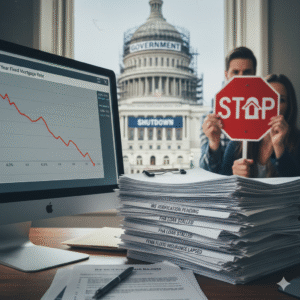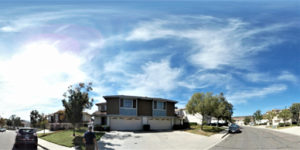California lawmakers on Wednesday began considering restrictions on unorthodox mortgage-lending practices that have allowed hundreds of thousands of Californians to buy homes they otherwise could not afford.
About half of all new home loans in California are something other than the traditional 30-year fixed loan. They use features such as no money down and variable interest rates, while giving borrowers creative monthly payment options such as paying only the interest or even less than that.
Such low introductory payments or teaser rates are offered in exchange for higher bills that will kick in years later, sometimes tripling or quadrupling monthly payments. Regulators said many of those riskier loans were taken out in 2004 and 2005 and will start resetting to higher rates this year.
"The exposure to these sorts of products, the growth, is unprecedented," Raphael Bostic, an associate professor at the University of Southern California School of Policy, Planning and Development, told a Senate committee. "The regulatory oversight of these types of practices is relatively lax."
California is among states where such lending practices were used aggressively, as housing prices soared beyond most people's ability to buy.
About 60 percent of sub-prime loans in California those given to the highest-risk borrowers allowed them to pay only the interest or gave them that option on an adjustable rate mortgage, the Federal Deposit Insurance Corporation estimated in a September report.
When the housing market began to soften last year, it left many borrowers unable to sell or refinance. They are facing the prospect of soaring monthly mortgage payments in the next few years as their interest rates climb by as much as 6 percentage points.
About 12.5 percent of riskier mortgages nationwide were delinquent by last fall. Nearly 1 million homeowners nationwide either lost their homes or missed monthly payments from July to September, according to the Mortgage Bankers Association.
"The market did not save them," testified Pam Canada, executive director of Neighborhood Works Home Ownership Center in Sacramento. "This was a nightmare with no happy ending."
The trend will worsen, the Center for Responsible Lending predicted in a December report.
The center estimated that nearly 20 percent of those who took out risky mortgages will lose their homes nationwide. In California, more than 21 percent are likely to default, with a foreclosure rate as high as 25 percent in some areas.
"We've already seen a dramatic increase in foreclosures here in California," said Paul Leonard, California director of the Durham, N.C.-based consumer advocacy center.[tags] mortgages, real estate, California real estate, foreclosure,housing bubble, real estate bubble[/tags] downtownSan Diego real estate agent





“Homeownership has become a vehicle for borrowing and leveraging as much as a source of financial security.”
Former Fed Chairman Paul Volcker, Feb 11, 2005
In a late 2002 survey of global house price movements, “The Economist” concluded that real estate inflation is a global phenomenon. Though Britain far outpaces the United States and Italy (65% rise since 1997), it falls behind Ireland (179%) and South Africa (195%). It is in league with Australia (with 113%) and Spain (132%).
Visit: San Diego eye surgery
Leverage — particularly buying stocks on margin (with little or no money down) — played a big part in the Great Depression. We’re doing much the same thing today with interest-only or negative amortization loans. acne cure
Soon even the San Diego Union will have to feature a front page story on the large home foreclosures taking place here.